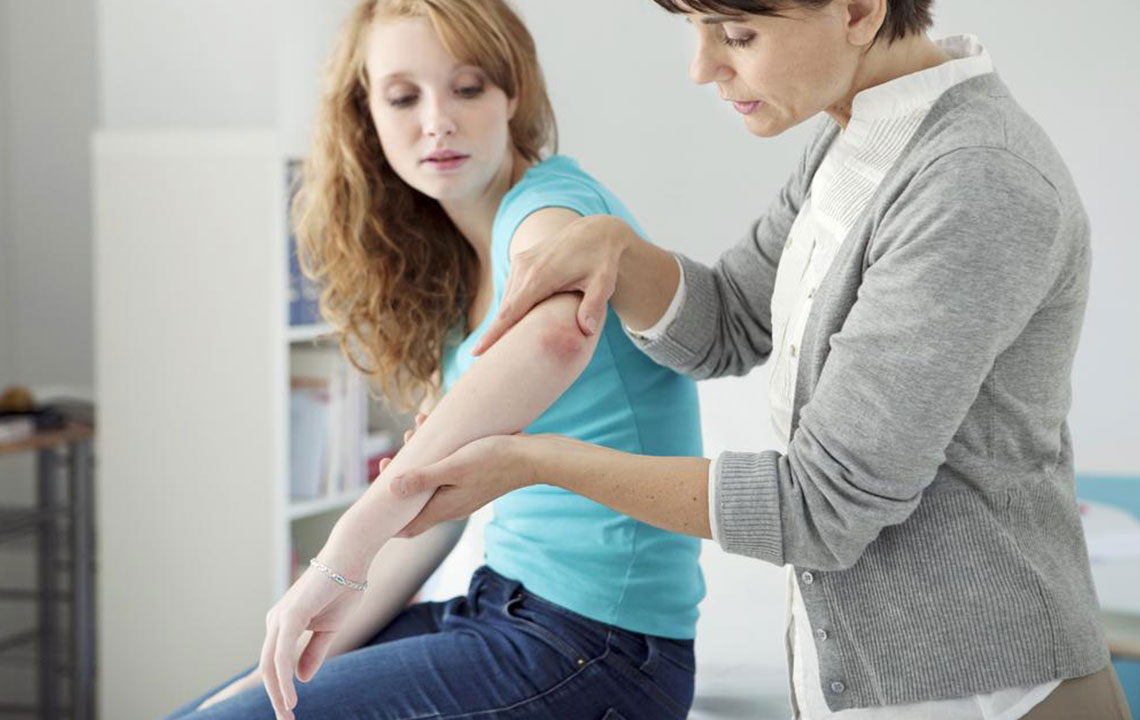6 Common Signs of Plaque Psoriasis
Psoriasis is a condition in which skin cells begin to grow uncontrollably. It can be categorized into various types based on how the condition manifests. Plaque psoriasis is the most common type, affecting approximately 80–90% of those with psoriasis. The condition can cause itchy purple or red thick patches called plaques, which are a buildup of dead skin cells. Plaques can develop anywhere but are commonly observed on the back, scalp, knees, and elbows.
The condition manifests in different ways depending on the skin color.

Signs
1. Rashes
One of the common early signs of plaque psoriasis is a skin rash. It is typically characterized by raised red patches with silver or white scales (plaques). The plaques can vary in size. Often, several small plaques combine to form larger patches. One may notice the plaques developing symmetrically over the body, especially on the limbs, elbows, scalp, and knees.
2. Skin inflammation and redness
Plaque psoriasis usually starts with reddish patches covered in silvery-white scales. On darker skin tones, the color may differ.
3. Joint pain
Sometimes, those with plaque psoriasis may also develop psoriatic arthritis, which affects the joints. Here, signs like swelling, stiffness, and pain can be observed in the joints. Upon noticing such signs, it is important to seek medical intervention.
4. Dry or cracked skin
The areas of skin affected by plaque psoriasis may look dry and susceptible to cracks. This can make moving the affected body part uncomfortable, especially when dryness develops in areas that flex or bend.
5. Burning and itching sensation
Psoriasis patches can be itchy and trigger a burning sensation. The affected area may also sting. This is why many plaque psoriasis treatment options are designed to help relieve itching.
6. Pitted or thickened nails
Plaque psoriasis symptoms are not limited to the skin. The condition can also affect the nails, causing small dents, pinprick-sized holes, thickening, and discoloration.
It is important to note that plaque psoriasis symptoms can vary from person to person. So, if one notices any unusual changes in their skin that do not seem to go away, they should speak to a doctor.
Reasons to see a doctor
With proper management and early diagnosis, plaque psoriasis can be managed. One should consult a dermatologist in the following cases:
– When one suspects plaque psoriasis upon noticing common signs associated with the condition
– When one notices persistent changes in the skin and experiences discomfort
– When non-prescription treatment fails to get rid of patches or rashes
Consulting a doctor can help one determine the exact cause of changes in skin and start with the right treatment.
Management options
Doctors may recommend a combination of treatments to relieve plaque psoriasis signs. Additionally, a few lifestyle changes and home remedies can support the treatment, soothe the skin, and prevent flare-ups.
Skincare: When dealing with psoriasis, one may have to take additional steps to keep their skin moisturized and free from irritation.
– While taking a shower, one should not spend a lot of time under hot water. One should opt for quick showers or baths in lukewarm water. One should also avoid using harsh bath products and rubbing the patches vigorously using a loofah or scrubber.
– Taking short Epsom salt baths can soothe the skin.
– One should keep their skin moisturized. Using a thick hypoallergenic emollient right after a bath, applying wet wraps containing moisturizers, and using doctor-recommended products can help the skin stay hydrated.
– One can use a humidifier to prevent skin dryness.
– It is important to avoid cuts and scratches as they can trigger or worsen psoriasis symptoms.
Lifestyle changes: Limiting sun exposure, wearing loose clothing, and getting enough sleep can help one deal with plaque psoriasis. One should also keep stress levels in check by practicing relaxation techniques like meditation and yoga. Stress can trigger psoriasis flare-ups. Regular exercise can also help reduce stress and improve overall health.
However, one should consult a doctor before starting any treatment.
Causes and risk factors
To seek prompt treatment, it is not only important to keep an eye out for plaque psoriasis signs, but also to recognize the factors that increase the risk of developing the condition.
Genetics: Psoriasis is often passed down from parents to children, so having a family history of the condition increases the risk of developing it.
Issues with the immune system: The excess growth of skin cells associated with psoriasis is brought on by an immune system malfunction. When the immune system overreacts, it makes new skin cells grow too fast, causing patches on the skin.
Environmental factors: Certain skin wounds and ongoing treatments can aggravate psoriasis symptoms. While they do not trigger the condition, these factors can trigger flare-ups in those already at risk of developing plaque psoriasis.




